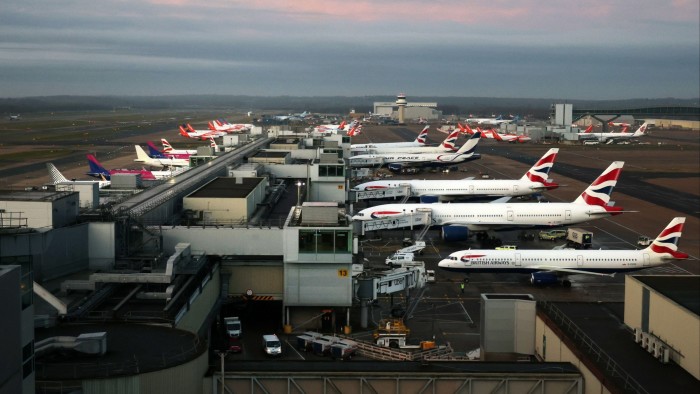Unlock the Editor’s Digest for free
Roula Khalaf, Editor of the FT, selects her favourite stories in this weekly newsletter.
Gatwick’s boss has urged the government to speed up approval of its proposed second runway but warned it could not fully comply with the Planning Inspectorate’s demands for changes to its proposals.
Stewart Wingate said he hoped the airport’s revised expansion plans, published on Friday by the planning authority, would allow ministers “a pathway that will enable them to give us the final approval” before an October deadline.
The application fell short of the Inspectorate’s full demands on noise and public transport use. However, Wingate said the application would allow the airport to invest with confidence while tackling concerns raised by the planners.
“You’ve got to have confidence, before you make the investment, that you can get the utility out of the investment,” he said.
After provisionally approving the project earlier this year, ministers had set an October deadline for a final decision.
But Wingate said: “Candidly, we don’t think we should have to wait until October . . . we think they should be able to make a decision ahead of the October deadline.”
Transport secretary Heidi Alexander said in February she was “minded” to approve a second runway, but only if Gatwick agreed to change its plan by adding more stringent targets both for access to the site by public transport and for noise mitigation.
Wingate said the plan for upgrading the UK’s second-largest airport, published on Friday, would deal with the concerns over transport and noise.
The £2.2bn project would expand capacity by moving Gatwick’s emergency landing strip 12 metres to the north. Relocating it would put enough space between the reconfigured runways so that both could operate at the same time.
The first flights could take off by the end of the decade, and an expanded Gatwick would be able to handle up to 75mn passengers a year by the late 2030s, up from the record 46.5mn in 2019.
The Planning Inspectorate recommended refusing Gatwick’s original proposal but, unusually, said it would approve the project should changes be made.
The agency, responsible for decisions on land-use planning, had demanded in February that the airport adopt a legally binding target of 54 per cent of passengers annually arriving by public transport.
Gatwick has accepted that target but does not want it to be binding because the airport itself has little control over the public transport network. Instead, it proposed a scheme that would apply if the threshold were not to be met.
This would stop it using the second runway, should the number of vehicles travelling to the airport rise above 24mn a year, until road upgrades were completed.
The airport said it would offer more money than it had originally suggested to insulate houses against aircraft noise, but this is still less than the Inspectorate requested.
It also accepted a decrease in the size of the “noise contour” area that is affected by aircraft noise from 135 to 125 sq km, pending government “clarification on the evidence and rationale put forward . . . for this”.
Wingate said the airport was concerned that a smaller area could limit growth in long-haul flights.
Ministers have backed airport expansion across London as part of a wider plan to encourage growth, but environmental groups say the plans are incompatible with the UK’s 2050 target of net zero emissions.
The government has approved expanding London City and Luton airports, and urged Heathrow to bring forward its plans for a third runway.
The Department for Transport said: “Gatwick has responded to the Secretary of State’s ‘minded to approve’ letter, and that response is published on the Planning Inspectorate’s website. A consultation giving all interested parties an opportunity to comment will be launched shortly.”
“The deadline for a final decision remains October 27.”




